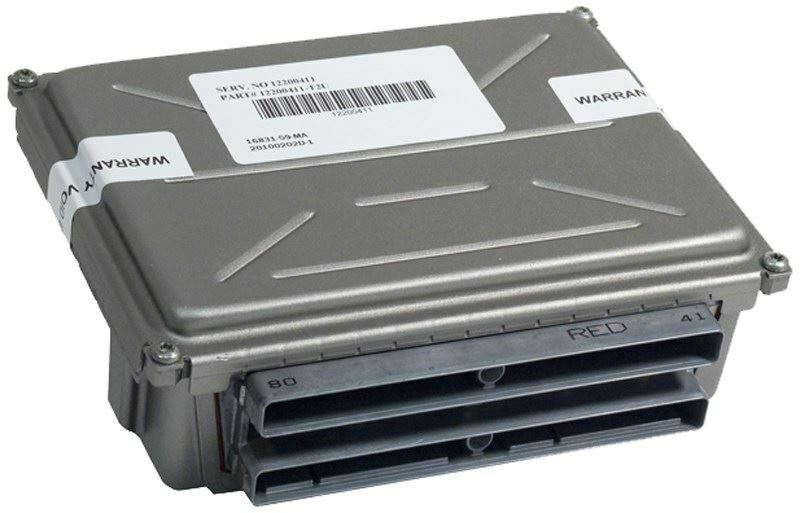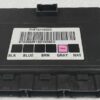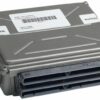Restore Peak Performance to Your GM Truck or SUV
Is your Chevrolet Avalanche, Silverado, Tahoe, or other GM vehicle suffering from erratic behavior? A faulty Powertrain Control Module (PCM), the central computer of your vehicle, is often the culprit behind frustrating issues like a persistent check engine light, poor fuel mileage, rough idling, or even a no-start condition. This replacement PCM, part number 12589463, is the definitive solution to restore your vehicle’s factory performance, reliability, and efficiency.
From the Diagnostic Bay
We had a 2005 Silverado 1500 in the shop that was driving the owner crazy. It had random misfire codes, a lazy throttle response, and the transmission would occasionally shift hard into second gear. The owner had already replaced spark plugs, wires, and even a throttle position sensor with no luck. After hooking up our professional scan tool, we noticed the data stream from the PCM was inconsistent, with voltage references fluctuating slightly. This pointed to an internal fault in the module itself. We installed one of our VIN-programmed PCMs, performed a quick security relearn, and the truck ran like it just rolled off the assembly line. It’s a classic case where chasing individual codes can be misleading when the core problem lies with the vehicle’s brain.
Is Your Vehicle Showing Signs of a Failing PCM?
A failing engine computer can manifest in numerous ways, often mimicking other component failures. If you’re experiencing any of the following, it’s time to consider your PCM:
- ✔ Persistent Check Engine Light (CEL) that won’t clear or returns with various codes.
- ✔ Unexplained drop in fuel economy.
- ✔ Rough, stumbling, or inconsistent engine idle.
- ✔ Hesitation or stalling during acceleration.
- ✔ Harsh or erratic automatic transmission shifting.
- ✔ Complete no-start condition where the engine cranks but won’t fire.
- ✔ Failure to communicate with diagnostic scan tools.
The Simple, Plug-and-Play Solution
Don’t waste time and money at the dealership. We make the replacement process straightforward and cost-effective. When you purchase this module, we will flash it with the latest official GM software updates specifically for your vehicle. All you need to do is provide us with your vehicle’s 17-digit VIN (Vehicle Identification Number) during or after checkout. Your new PCM will arrive at your door, programmed and ready for installation. This eliminates the need for expensive specialty tools or a trip to the dealer for programming.
Why a VIN-Programmed 2003-2006 Avalanche PCM is Crucial
The 2003-2006 Avalanche PCM is not a one-size-fits-all part. It must be correctly calibrated for your truck’s specific engine, transmission, emissions equipment, and factory options. Our professional programming service ensures that all these parameters are perfectly matched, guaranteeing seamless integration and optimal performance. This module is a direct replacement for several service numbers, including 89017750, 12582605, 12589463, 12602802, 89017734, and 28042802, ensuring wide compatibility across the GM truck and SUV lineup.
Frequently Asked Questions
Do I need to get this PCM programmed?
No. This PCM comes fully programmed to your vehicle’s specific VIN before we ship it. It is ready for installation right out of the box, saving you a trip to the dealership.
What is a VIN and why do you need it?
The VIN is your vehicle’s unique 17-digit identification number, like a fingerprint. We use it to load the exact factory software and calibrations for your specific engine, transmission, and options, ensuring perfect compatibility.
Where is the PCM located on my vehicle?
On most compatible models like the Avalanche, Silverado, and Sierra, the PCM is located in the engine bay, on the driver’s side, underneath or next to the battery tray.
Will this fix my check engine light?
If the check engine light is caused by a faulty PCM, then yes, this part will resolve the issue. However, it’s always best to have your vehicle properly diagnosed to ensure the PCM is the root cause of the problem.
Is any special procedure required after installation?
In many cases, you may need to perform a simple security relearn procedure, also known as a Passlock or VATS relearn. This can typically be done without any special tools and involves a series of key cycles. Instructions are widely available online or in service manuals. A Crankshaft Variation (CASE) relearn may also be needed for optimal performance, which requires a capable scan tool.


